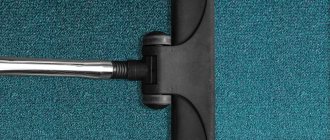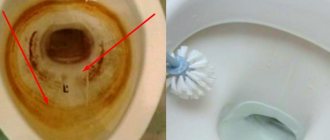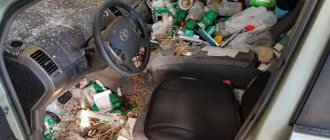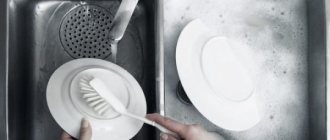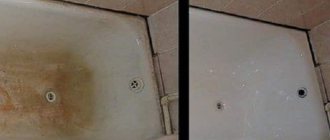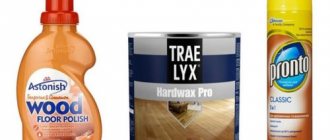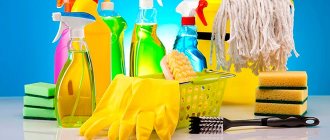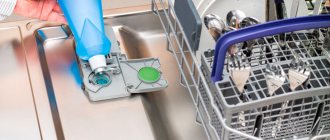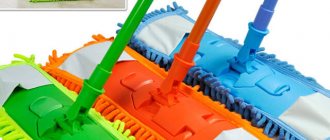Since the quality of tap water in a centralized water supply system leaves much to be desired, many housewives are forced to periodically clean the sink, toilet, bathtub or sink using special products.
General cleaning of these surfaces is the most unpleasant part of home cleaning, since rust, limescale and yellow stains (especially old ones) are difficult to remove. Nobody wants to spend a lot of time cleaning their home, much less scrubbing away stubborn stains. To help housewives, many household chemicals have been created for cleaning and disinfecting plumbing fixtures. High-quality household chemicals make it possible to quickly remove all plaque and give it an aesthetic appearance.
In this article, we will look at the criteria for choosing cleaning liquids, and also find out what to look for when buying gels, powders and sprays, in order not to make mistakes when choosing.
Causes of pollution
The very first thing to understand is what you have to fight with. After all, dirt on plumbing fixtures can be of different nature.
- Limescale (water stone) - the water in the pipeline is far from filtered; it contains a large amount of impurities and salts. Drops fall on surfaces during use, then the moisture evaporates, leaving sediment behind.
- Rust - its particles are also present in the water, and gradually it settles on taps and appliances, forming unsightly stains.
- Hygiene products - during water procedures we use soap, shampoo, shower gel. Naturally, they fall on surrounding objects and form a soapy layer.
- Urine stones are a problem with toilets, and often the owners themselves are to blame if they do not have the habit of flushing each time after going to the toilet. For example, some people do not do this at night so as not to wake up their household. Gradually, mineral compounds are deposited on the walls, forming a durable layer and unsightly darkening.
Any cleaning involves working with aggressive components, so don’t forget to wear protection: a mask or respirator, gloves, and clothing that is as closed as possible. You also need to open the door to the bathroom to reduce the concentration of harmful fumes.
Adviсe
- You will achieve the best effect if you clean your plumbing fixtures at least once a week.
- Throw away jars and boxes that you don’t use without regret. This will free up space on the shelves and speed up the cleaning process.
- Always follow the directions on the chemical cleaner.
- Observe precautions when working with caustic drugs.
- Ventilate the bathroom as often as possible.
- Dry wet towels regularly and replace them with clean ones every 3-4 days.
Following the recommendations and regularly cleaning the plumbing will keep the bathroom fresh and clean, without the chance of dirt and bacteria growing.
Special means
Special chemicals can be called universal soldiers, since they are suitable for almost any contaminant and guarantee a good result.
In general, the main thing you should focus on when choosing household chemicals is the material from which the surface to be cleaned is made. Therefore, be sure to read the label and choose only the appropriate formulations.
Purchased products can be divided into three main categories.
- Alkaline - remove organic compounds, salts and rust and do not have a strong odor. These include Domestos, Cif. By the way, alkalis are excellent for cleaning sewer pipes from grease and sticky film.
- Chlorine-containing ones perfectly corrode dirt and disinfect. A significant disadvantage is the pungent odor that is difficult to remove. As an example, we can cite the well-known “Whiteness” or the more modern EasyWork, “Santex”.
- Acidic - remove the oldest and most complex sewage, but can cause harm to some materials. This is the largest group: “Toilet duckling”, Cillit, “Sanox”, “Chistin”, Synergetic, Comet and others.
There is a wide range of cleaning powders (for example, Pemolux or Comet), but these should only be used in extreme cases. They leave scratches, even if they are not visible to the eye, but because of them, dirt will accumulate in these places faster. Not only the appearance is lost, but the service life of the device is also reduced.
Cream and gel textures are considered the best, as they work carefully and are consumed more economically than liquid ones.
For chrome elements, at the final stage it is worth using a polish that will hide small scratches and give the product a radiant shine: Sonax paste for chrome and aluminum, Doctor Wax, Runway.
When cleaning the shower stall, you will need glass cleaning liquid. It will eliminate stains from glass walls. Frosch Glass Cleaner, “Mr. Muscle”, Clin, CIF have proven themselves well.
If for some reason you are not satisfied with the products of the chemical industry, then you can turn to proven home remedies.
A little bit of science
First, let's study a little what a chrome surface is. In our minds we are always talking about a shiny and mirror structure. Visually everything is correct, but from the point of view of galvanoplasty everything is much more complicated. Chromium itself is not used in its pure form; in the process of applying it to the surface of products, its compounds (solutions) are used. Moreover, chrome plating is carried out on the so-called sublayer, which can be a thin film of copper or nickel. Thus, the resistance of such a surface to destruction is significantly increased. The components of almost all high-quality faucets are presented as follows: the base is brass, the sublayer is nickel and the top is chrome.
On cheap products made from silumin, galvanic application of chromium is difficult to implement, so special varnishes are widely used. This product has nothing in common with real chrome plating, which can be distinguished by its cool blue tint.
In general, when choosing a faucet for a bathroom or kitchen, focus on the weight of the device and the shade of its surface.
Toilet
Let's start cleaning with the most painful part: the toilet. It is unpleasant to clean, and there are many hard-to-reach places where sewage accumulates: under the rim, around the drain hole and inside it, in the tank.
In case of simple stains, you can get by with weekly cleaning with a brush and any detergent.
If a “white friend” needs serious cleaning, then the sequence of actions should be as follows:
- turn off the water;
- remove liquid from the drain hole using an old glass, ladle, syringe or plunger;
- wipe dry and treat with the selected composition;
- leave for some time;
- carefully scrape off the remaining plaque with a brush, brush, scraper and sponge;
- rinse.
How to remove the stone? Tested substances will come to the rescue.
Soda and vinegar
Prepare the composition in the following proportions: the same amount of powder per tablespoon of acid. Wipes need to be soaked in the solution and applied to dirty areas overnight.
Lemon acid
Two or three bags of lemon juice should be diluted a little with water to form a strong solution. They need to treat the affected areas for at least 3 hours.
Oxalic acid
It is used in the same way as the previous method, only the exposure period is increased to 6 hours.
"Coca Cola"
Unexpected, but quite effective. Pour a bottle of soda (2.5 liters) into the toilet and wait a couple of hours.
Battery electrolyte
It is sold in automotive supply stores. The liquid needs to be poured into the bowl and left for about 15 minutes. No longer is necessary, otherwise the chemical may damage the enamel.
For proper operation of the drain mechanism, do not forget to periodically (at least once a year) clean the tank. To do this, you will first have to remove the cover from it. Then you should use one of the following methods:
- spread a paste of soda and water onto the walls and rub thoroughly;
- Apply vinegar to the inside and after a while rinse the tank;
- a bag of lemon juice must be diluted in a full tank for 2–3 hours;
- Coca-Cola contains phosphoric acid, and therefore copes well with lime and rust: just pour the drink into a container and leave for several hours.
You can also pour diluted chlorine-containing or acidic products into the tank, which we talked about above.
Cleansing tablets are great for daily care. They not only help remove plaque, but also color the liquid, remove odors and keep the toilet bowl clean.
Features of choice
To buy a good detergent for plumbing, you can study the rating of household chemicals, study user reviews on the Internet, or be guided by personal experience. In any case, when purchasing, you need to consider a number of parameters:
- The composition should not contain coarse abrasive components and acids that can scratch or corrode the coating of plumbing fixtures.
- It is better to choose products in the form of gels and liquids, as they are more convenient to use.
- The product should quickly remove even stagnant limescale, traces of rust and mold.
- There should be no strong odors.
- It is important that the product easily copes with harmful bacteria that often accumulate on plumbing fixtures (especially in toilets).
- The product must be suitable for the type of plumbing fixture: acrylic, cast iron, enamel.
Be responsible when choosing and purchasing household chemicals for cleaning plumbing fixtures and take into account all the listed parameters so that the product turns out to be truly effective.
Bath
The method of cleaning and whitening a bathtub depends primarily on the material from which the bathtub is made.
Cast iron and steel products have durable enamel; no aggressive components harm it. She is not afraid of powders either, although it is advisable to be careful here, because gradually the enamel coating becomes thinner, roughness appears, and stains form faster.
To combat the white layer, you can use vinegar. Place rags soaked in the substance on the stained areas for half an hour. Afterwards all that remains is to wash off the exfoliated lime.
Ammonia will also help: dilute a small amount with water and apply for 10 minutes. Residues should be removed with hot water.
You should be careful with an acrylic bathtub. Acrylic, although hard, is still plastic, so it scratches, absorbs dyes and melts. So no abrasives, brushes, bleach, or alkali.
From folk recipes, you can only try vinegar diluted 1 to 10. The solution should be applied to problem areas and washed off after 12 hours.
You can also use oxygen bleach, which is poured into a bathtub full of water. You can calculate the amount of bleach as follows: multiply the portion indicated for washing by two. After a few hours, the liquid needs to be drained and the font washed with a soft cloth.
Gel textures of specialized compositions are best suited for acrylic. This is the case when it is undesirable to take risks and it is worth choosing purchased funds.
How to clean a nickel-plated faucet
All of the above folk methods are suitable for cleaning nickel-plated taps. Laundry soap with the addition of table salt remains an indispensable cleaning agent. However, there are little tricks that can help add shine to your nickel-plated faucets.
An ordinary window cleaner and a napkin will successfully cope with this task. Using a spray bottle, apply window cleaner to nickel-plated surfaces and immediately wipe it dry with a cloth. If you regularly perform such simple actions, the original appearance of your taps will be preserved for a very long time and their global cleaning may simply not be necessary.
We recommend the product
Mixer Imprese Odlove T-15300 1 review
To order
Type: single lever | Type: shower system | Material: brass | Height, mm: 1100 | Purpose: for shower | Equipment: overhead shower, shower, shower hose, shower holder, rod |
Sink
This item “gets” more than others: more than once a day, family members brush their teeth and wash their hands here (sometimes after very dirty work and activities), the dog’s paws are washed here after a walk, and children rinse their brushes after drawing with paints. In general, stains accumulate quickly.
The good thing is that sinks are usually made of earthenware or porcelain, and therefore the principle of cleaning them is no different from toilets and they are not afraid of chemicals, but you cannot rub them with metal brushes, otherwise you can damage the coating. The recipes already described above with vinegar and soda and lemon are ideal. Only the duration of exposure should be reduced: 15–20 minutes is enough.
You can use natural lemon juice: rub half of the fruit on the affected areas. A pleasant citrus aroma will be a bonus. This method is also suitable for sinks made of artificial stone.
Heavy dirt and deposits can be removed with ammonia. Treat particularly dirty areas with ammonia and then rinse. If you add hydrogen peroxide to it (50 ml of peroxide per 100 ml of ammonia), then this mixture will also get rid of rust.
If you have a stainless steel sink, do not use acid-containing compounds, otherwise discoloration will remain on the sink!
Domestos
You can get rid of stains on your kitchen sink with Domestos bleach containing chlorine, which will remove grease, mold and germs without damaging the surface of the sink, and eliminate unpleasant odors. Chlorine does not corrode the material and has intense disinfectant properties and cleaning components.
Domestos universal cleaner cleans and disinfects, removes stubborn dirt, grease, oil deposits, soot and much more from natural (marble, granite) and artificial stone and metal. Domestos cleaning product is economical and lasts longer than liquid detergents.
Shower cabin
Many people are replacing the usual bathtubs with comfortable shower cabins. This is understandable, since they take up less space and allow you to increase the usable area of the bathroom.
However, caring for the booth is not so simple: lime and soap accumulate on the bottom and walls, which are quite difficult to wash. If you neglect constant washing, soon the internal surfaces will become covered with white stains and dark spots, and washing in the shower will become very unpleasant.
When cleaning weekly, it is better to follow this sequence of actions:
- wash the walls and plastic parts from limescale, dirt and mold;
- remove all deposits from glass doors, and then wipe them with glass cleaner to get rid of streaks;
- clean the faucet, shower head and other chrome elements;
- All that remains is to wash the tray, taking into account the material (acrylic, enamel coating or others): a bath product is ideal for this.
Guess who will help in the fight for purity? Yes, yes, components already familiar to us.
Prepare a solution of two parts water and one part vinegar and use a spray bottle to spray it around the cabin. After 15 minutes, all that remains is to wash off the composition and brush.
Citric acid is also used according to the same principle: 100 g of powder per 0.5 liter of warm water.
You can wash the glass doors of the booth until they shine using ammonia. 1 tbsp. l. The substances should be diluted in 1 liter of water and the glass should be wiped with a cloth soaked in the mixture.
You can watch the action of various methods in the video:
How to clean chrome surfaces
Chrome taps look equally royal in the bathroom and in the kitchen. They will serve you for years due to the durability of the material. However, their appearance requires constant housekeeping care, since unsightly lime stains are especially noticeable on their sparkling surface. The main thing in caring for such plumbing parts is not to let them get too dirty. The more noticeable the limescale deposits are, the more effort you should put into cleaning the tap. And this can damage the surface and irreversibly ruin the appearance. Regular laundry soap will do an excellent job of cleaning chrome taps.
Watering can and mixer
It is immediately worth noting the rules that it is advisable to follow when caring for chrome surfaces.
- Do not rub elements with metal sponges, otherwise scratches will form.
- For the same reason, cleaning powders are prohibited.
- There is no need to use hydrochloric, phosphoric and sulfuric acids: they provoke the appearance of dark spots.
The holes for the jets to exit and the joints of the parts quickly become overgrown with lime and force you to buy a new watering can. To prevent this from happening, cleaning must be done on a regular basis.
The most effective method in combating deposits is our favorite vinegar. You need to pour undiluted table acid into the bag and secure it to a watering can using an elastic band. It's better to leave it overnight. Afterwards, the remaining plaque should be removed with a brush, and stuck particles should be picked out from the holes with a toothpick.
You can unscrew the nozzle from the hose and place it in a container with vinegar for 6–8 hours. Then all that remains is to thoroughly rinse the part under pressure.
You can also prepare a solution from lemon juice: 25 g per 1 liter of hot water.
If you have hard water and no filter, then buy a dismountable watering can so that you can clean it from the inside.
It makes sense to carry out internal cleaning no more than 1-2 times a year, since if you regularly remove the buildup from the outside, it will accumulate more slowly.
In order to remove dirt from the faucet, time-tested techniques will do.
Laundry soap and soda
Helps against fresh plaque. The recipe is as follows:
- grate the soap and mix with water to the consistency of sour cream;
- add a little baking soda or soda ash;
- apply the paste to a napkin and place it on the mixer;
- leave for 1 hour and rinse.
You can simply apply a slurry of soda to the tap and leave for about an hour.
Baby oil
Removes not only small stone deposits, but also soap stains and greasy stains. Use a rag soaked in oil to go over all stained areas. Then the oil needs to be washed off and the faucet polished with flannel or suede.
Vinegar and lemon
Any of the mentioned substances (pre-dissolve lemon juice) should be wetted with a cloth and applied like a compress to chrome-plated appliances. Literally 15 minutes will be enough. To wash heavy stains, you can heat the mixture and increase the exposure time to 2 hours.
Don't forget to clean the aerator occasionally if you have one installed on the spout. To do this, the part must be removed, washed and soaked in vinegar overnight. Then the holes will have to be processed with a needle or toothpick.
Subtleties of cleaning the aerator
It also happens that the surface of the faucet is cleaned, but the internal parts become clogged due to the deposits that have formed. Most often, the mesh nozzle that sprays water, the aerator, suffers. It serves to enrich the water with oxygen and ensure its uniform flow. An aerator is a useful faucet element that performs the following functions:
- reduction of noise level due to the formation of small bubbles;
- reduction of droplet splashing;
- significant water savings;
- filtering small particles of debris.
When an aerator becomes clogged, all of its intended functions are lost. Often this part is covered with lime flakes, which causes the holes to no longer cope with the task. Such blockages are characterized by the fact that when the tap is fully opened, water flows slowly and does not spray. In this case, the element must be cleaned:
- Unscrew the faucet nozzle: to do this, wrap it in soft material and use pliers to turn it clockwise.
- It is important that the aerator is made of steel; in the case of a plastic part, there is a high risk of it breaking during removal.
- To unscrew a jammed attachment, you can use the above method using WD-40.
- Rinse the tap hole with water.
- Place the aerator in the vinegar solution for several hours.
- The holes in the aerator must be additionally cleaned with a needle.
- Screw the cleaned element back into the tap. It is better not to tighten the fastener too much, so that you can remove it and clean it at any time.
If you have difficulty unscrewing the aerator, contact a plumber.
